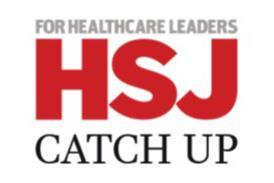Mark Crichard looks at the key obstacle and challenges facing NHS organisations when looking at reconfiguring pathology services, and finds Lord Carter’s recommendations are still valid
The East of England Transforming Pathology Services project came to a grinding halt after some three years of effort. The same fate seems to have come the way of the similar exercise in the East and West Midlands.
‘Progress remains painfully slow, particularly bearing in mind how many years have elapsed since Lord Carter’s original report’
Both these projects were touted as being “disruptive”, using the aggregated procurement of direct access pathology services to cause change in the configuration of (and consolidation of) the “supply” side within the NHS − ie: encouraging existing NHS laboratories to merge or collaborate. Both may have suffered from bad timing, as the relatively new clinical commissioning groups probably have more pressing things to deal with than alternative ways to buy pathology services. However, the net result is the same.
That does not mean, however, that the status quo will be retained. For instance, University College London Hospitals and the Royal Free in London are continuing with their procurement, looking to establish a joint venture for the provision of pathology services. Basildon and Thurrock and Southend have also launched a similar exercise.
Nevertheless progress remains painfully slow, particularly bearing in mind how many years have elapsed since Lord Carter’s original report in 2008.
So what are the key obstacle and challenges that NHS organisations (and potential providers) face when looking at reconfiguring pathology, and which of them are getting the way of more rapid change?
Doing justice to such a question probably requires many pages of commentary. However, there are probably a distinct number of factors at play that are particularly worthy of note.
Limited benchmarks
Historically it is fair to say that − with some notable exceptions − there hasn’t been a tremendous track record of NHS trusts and foundation trusts collaborating in the delivery of pathology through shared or coordinated networks. There are lot of good, and bad, reasons why this has been the case.
The net result, however, is that there remain only a relatively small number of real examples for NHS organisations to look at as “benchmarks” and to learn lessons from. Inevitably that must lead either to extra caution when deciding if and how to make changes, or elongated project timescales as each new project learns its own lessons.
Tax
HM Revenue and Customs has certainly thrown a spanner in the works by arguing that certain models for delivering pathology through outsourced services should be treated as the provision of “healthcare services” and therefore exempt from VAT.
‘Any significant change to pathology services is likely to involve reduced staffing levels and some capital investment’
While initially sounding attractive, this creates the very real risk that substantial input VAT incurred by outsourced suppliers will be “stranded” within the provider, inevitably leading to increased charges or expensive restructuring. There remain ways around this issue, but the uncertainty created is most definitely unhelpful (and means tax advice will need to be part of any pathology project).
Competition law
The Office of Fair Trading is also showing an increased level of interest in the competition implications of the healthcare market. While the law hasn’t actually changed, the recent “guidance” and FAQs issued by both the OFT and Monitor on the potential application of competition law to collaborations, joint ventures and outsourcing deals relating to pathology has certainly made both NHS organisations and private sector provides nervous.
It is curious that while Lord Carter recommended increased consolidation this sort of intervention is probably causing the opposite effect.
That said, the OFT’s decision to give merger control clearance to the proposed joint venture between UCLH, the Royal Free and Doctors Laboratory Limited is extremely positive, though it doesn’t necessarily remove the need to take the potential impacts of competition law into account when planning pathology reconfigurations.
Pensions
Transfer of employment, and associated pension challenges, is obviously not such a big concern for “intra” NHS collaborations or networks. However, in the context of fully outsourced or joint venture solutions, staff-side issues and particularly pension rights will be a major factor − especially as providing a comparable pension scheme to the current NHS pension can be prohibitively expensive (and, indeed, could quickly destroy a business case).
Recent pathology deals have involved a mixture of solutions to this problem, including the use of the “retention of employment” model. Hopefully the government’s new Fair Deal will, in due course, make things easier − with the presumption being that transferring staff will be allowed to continue to participate in the NHS pension (with their new employer matching NHS employer contributions). However, we have yet to see how this will work in practice.
Appetite for investment or change
Any significant change in the delivery of pathology services, whether through a network, consolidation or “simple” outsourcing, is likely to involve a combination of reduced staffing levels (ie: redundancy) and some capital investment. It will probably also lead to a significant change management exercise.
‘If anything, the financial drivers for implementing Lord Carter’s recommendations are increasing’
Not surprisingly, funding upfront capital costs is a challenge for many NHS organisations, although arguably doing nothing is merely delaying the inevitable.
However, perhaps more importantly, for major pathology reconfigurations to get off the ground − let alone reach conclusion − they need real buy-in from the key stakeholders, including senior management, clinicians, commissioners and of course pathologists themselves.
Achieving this is perhaps the single biggest obstacle that needs to be overcome.
Conclusions
While these factors and others go some way to explaining the relatively slow rate of change, the logic of Lord Carter’s recommendations are still valid today. If anything, the financial drivers for implementing those recommendations are increasing.
We should therefore see the pace begin to pick up. However, for those projects that do come about they need to be well thought through and planned, in order to anticipate and deal with the challenges they will encounter, whether they are those mentioned above or otherwise.
Mark Crichard is a partner at RPC



























3 Readers' comments